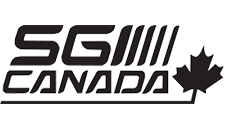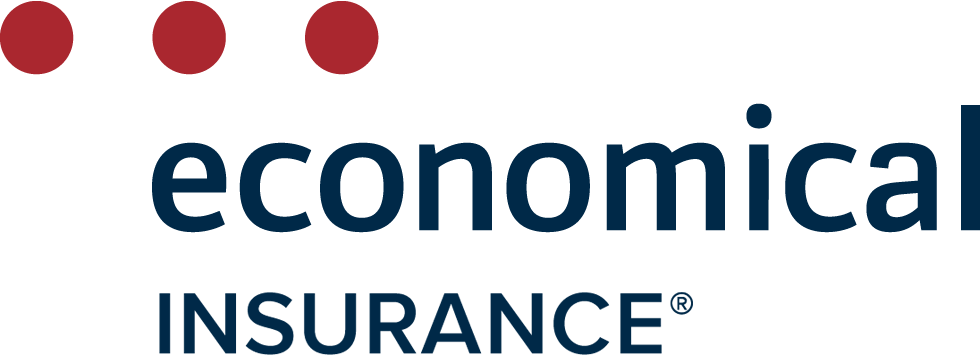
Get Cheap Home Insurance in Alberta
Compare home insurance quotes from 50+ providers in a single search!
How home insurance works in Alberta
Home insurance is a customizable product that offers financial protection to Alberta homeowners. While it’s not mandatory anywhere in Canada, it’s well worth considering. For the cost of a monthly premium, the value of the home and its contents can be protected against perils such as fire, wind and hail.
Most policies include the following four coverage components:
- Contents: Protects the homeowners' belongings against a covered peril. Very valuable items may require additional protection which homeowners can secure through an endorsement or rider. In some instances, an appraisal may be required.
- Property: Protects structures on the property such as the home itself and the garage.
- Liability protection: Home insurance policies also include liability protection if someone is injured while visiting, or, the homeowner unintentionally damages someone else’s property.
- Additional living expenses: Provides financial support to the homeowner, covering expenses if they’re forced to leave the home due to a covered peril.
Home insurance policies are marketed by insurance providers in packages. It’s common for homeowners to choose between the three following home insurance policy types:
- Basic: Provides coverage for common perils such as fire, wind and hail. This type of policy is sometimes called a ‘named perils’ policy. It’s the minimum amount of home insurance protection available.
- Broad: Provides coverage for all perils as well as contents. Some insurance providers may market this policy type as a ‘standard policy’.
- Comprehensive: Provides the most coverage for all perils to the home as well as its contents – except for any exclusions such as flood protection. This policy type is sometimes referred to as an ‘all perils’ policy.
Homeowners can then extend coverage by adding endorsements or optional coverage. These add-ons offer protection against perils that are either not included in the policy or are explicitly excluded.
Common add-ons include:
- Earthquake/landslide: Provides coverage for damage from the earth moving, including earthquakes or landslides. Though neither peril is particularly common in Alberta, they’re not unheard of. We recommend that Alberta homeowners seriously consider adding this coverage to their home insurance policy.
- Mass evacuation: Provides coverage and financial support if the homeowner is forced to leave the home due to a government-mandated evacuation such as that ordered during the wildfires in Fort McMurray, Alta. In 2016.
- Identity theft: Provides coverage and financial compensation if the homeowner is forced to replace documents if their identity is stolen.
- Overland water: Provides protection against damage from water that enters the home having overflowed from a nearby waterway. Most flood protection is excluded from home insurance policies. This endorsement must be added for protection.
- Sewer back-up: Provides protection against damage from water that enters the home from an overflowing drain or toilet. This may happen during a storm surge when the water table and municipal sewer systems are overwhelmed.
How to get the cheapest home insurance quote
Three easy steps to getting a great home insurance policy for less

Start A Quote
Answer a few quick questions about yourself and your home
Compare rates
Easily compare the best home insurance rates from trusted Canadian insurance providers
Lock it in
Connect with a licensed broker by email or phone to purchase your policy of choice
We've got hundreds of 5 star reviews
2,247 reviews on TrustPilot. See some of the reviews here.
Fran
Curtis
Robert Clarkson
Vincenzina Perri
Keith
Dev
Georgia
Shirley Munro
Hoang Tran
Alnoor
Michael Benninger
Gene
D on
Robert
Remonia Thompson
Rich
Luis
Average Alberta home insurance rate change
Across Canada, home insurance premiums have steadily increased as providers pay out record claims for damage from more severe weather events.
In the latter half of the 2010s, Alberta experienced multiple weather events that resulted in ‘catastrophic losses’ (insurance lingo for events that result in more claims than usual). The 2016 fires that razed Fort McMurray cost the insurance industry $5.04 billion alone and it remains the largest insured loss event in Canadian history.
Events like these trigger premium hikes; as destructive storms become more frequent, insurers need to make sure they have enough cash reserves to meet their obligations to current and future customers.
And yet, home insurance prices were declining at the start of the new decade. Year-over-year, home insurance premiums in Alberta between the end of Q2 in 2020 and the end of Q4 in the same year went down more than 1%.
Unfortunately, insurance prices quickly changed course. According to Applied Systems, the average year-over-year increase in personal property premium rate in Alberta, from Q2 2021 to Q2 2022, was 8%.
While many factors could have triggered the reversal, severe flooding in Fort McMurray in 2020 likely didn't help; that disaster resulted in $2.3 billion in claims. Then the following year, a hailstorm in Calgary resulted in $247 million in payouts.
Further price hikes are expected due to ongoing supply chain issues driven by the COVID-19 pandemic and inflationary pressures.
In general, home insurance rates are easier for providers to increase because the regulatory approval that car insurance rate increases require does not apply.
There are many ways that homeowners in Alberta can reduce their insurance costs, including:
- Bundling: When a homeowner agrees to have more than one of their insurance policies held by one provider, they’ll be able to secure savings. Some of the most common policies to bundle include home and auto.
- Credit check: Insurance providers in every province but Newfoundland and Labrador can factor in the results of a soft credit check to reduce a home insurance premium. The homeowner’s consent is required, and, by law, a bad credit score cannot be used to increase the premium.
- Customizing the policy: Homeowners will pay more for more coverage. Those who take the time to carefully assess what coverage they need and what they can do without can save. For example, if a homeowner doesn’t have many belongings that they consider irreplaceable, they may be willing to forgo contents coverage. Customizing the policy is a personal decision that can lead to less expensive coverage.
- Don’t smoke: Homeowners who don’t smoke may be eligible for savings because it signals to the provider that a claim for damage from fire is less likely.
- Increasing the deductible: Homeowners who agree to pay a higher deductible may be able to secure a lower premium. However, we recommend that they make sure that they’re likely to have the cash available in the event of a claim.
- Installing a security camera: Insurance providers may offer cheaper home insurance premiums to Alberta residents who take measures to improve the safety of their homes. Installing security cameras is a good step. Discounts may also be available for homes with smoke and carbon monoxide detectors. Insurance providers consider safer homes less likely to result in a claim.
- Renovation: When a home is kept in good repair, an insurance provider can be confident that the homeowner is likely to file a claim for damage from disrepair. They may, in turn, reward the homeowner with a lower premium. We recommend that the homeowner alert their insurance provider about the renovation itself to make sure that their coverage can be extended to protect against financial loss during a renovation.
Top Alberta home insurance companies
| Insurance company | Company type | Phone | Address |
|---|---|---|---|
| Allstate Insurance | Agency | 587-401-3978 | 1649 102 St NW, Edmonton, AB T6N 0B1 |
| AMA Calgary Main | Agency | (403) 240-5300 | 4700 17 Avenue SW T3E 0E3 Calgary |
| AMA Insurance - Edmonton | Agency | 780-474-8777 | 10310 G. A. MacDonald Ave NW, Edmonton, AB T6J 6R7 |
| Aviva Insurance | Agency | 403-750-0600 | 112 4 Ave SW Suite 2100, Calgary, AB T2P 0H3 |
| belairdirect | Agency | 1-833-378-6200 | 901-9707 110 St NW, Edmonton, AB T5K 2L9 |
| Economical Insurance | Agency | 1-800-661-3274 | 10158 103 St NW #300, Edmonton, AB T5J 0X6 |
| InsuranceHotline.com | Quotes comparison | 1-855-821-7312 | 360 Adelaide St W suite 100, Toronto, ON M5V 1R7 |
| Intact Insurance | Agency | 780-428-7544 | 10830 Jasper Ave #700, Edmonton, AB T5J 2B3 |
| LowestRates.ca | Quotes comparison | 1-855-487-6911 | 1910 Yonge St Suite 401, Toronto, ON M4S 3B2 |
| RATESDOTCA | Quotes comparison | 1-844-726-0907 | 360 Adelaide St W suite 100, Toronto, ON M5V 1R7 |
| Surex Insurance | Brokerage | 1-855-242-6612 | 130 S Centre St, Magrath, AB T0K 1J0 |
| TD Insurance Home & Auto | Agency | 780-409-0281 | 10025 102A Ave NW, Edmonton, AB T5J 2Z2 |
Why use InsuranceHotline.com to compare home insurance quotes online?
There are lots of reasons to compare!
SAVE MONEY
On average, shoppers save $300 on home insurance comparing quotes with us.
SAVE TIME
In just a few minutes you can compare quotes from more than 50 insurers.
IT'S FREE
There's no catch or fine print; our service is absolutely free for you to use.
IT'S EASY AND QUICK
You're just a few quick questions away from your custom quote.
YOUR INFORMATION IS SAFE
Your details are secure. Look for a locked padlock in your browser as well as https.
WE RESPECT YOUR PRIVACY
Your privacy is important to us. We never share your details without your consent.
Risks homeowners face in Alberta
Many home insurance policies list exclusions or perils that are not covered. A common exclusion is flooding with no home insurance policies in Alberta providing flood protection unless specific endorsements are added by the homeowner.
When adding flood protection, homeowners may notice that some insurance providers offer water protection packages that include coverage for different types of flood protection such as overland water and sewer back-up.
Alberta residents are increasingly familiar with the need to have flood protection. Insured losses resulting from severe weather events across Canada reached $2.1 billion in 2021, according to the Insurance Bureau of Canada. Some of the most expensive disasters in Alberta include hailstorms in July 2021 ($500 million) as well as several rainstorms and wildfires. The wildfire that ravaged Fort McMurray, Alta in 2016 remains one of the most catastrophic insured loss events in Canadian history, totaling more than $5.4 billion.
While most home insurance policies include coverage for damage from fire (including wildfire) and wind (including hailstorms), in order to be covered, the homeowner must have basic home insurance.
Alberta residents who live in an area that insurance providers have deemed high-risk hail zones should closely examine their home insurance policies so that they’re aware of any coverage restrictions and/or rate increases associated with hail risk. It’s not uncommon for homes in Alberta to be damaged by golf ball-sized hail.
Frequently asked questions about Alberta home insurance
How can I find the cheapest home insurance quote in Alberta?
The single most effective way to reduce home insurance costs is to compare available rates. Alberta homeowners who take the time to survey premiums from providers across Canada every time their policy is up for renewal can save up to 30%.
Other ways to reduce premiums include bundling coverage so that each policy is held by a single provider, agreeing to a credit check, increasing the deductible, keeping the home in good repair and installing security, fire and smoke alarms. It’s also important for homeowners to customize their coverage so that they’re only paying for the coverage they need, nothing more.
How much is home insurance in Alberta?
According to RATESDOTCA’s Home Insuramap, in 2022, the average home insurance premium in Alberta was $2,339. In general, home insurance rates are determined by many factors, including location. Those living in areas that are prone to flooding or perils such as fire and wind damage should expect to pay more for their coverage. On the other hand, homeowners in areas that are considered safer – whether from extreme weather or theft – can expect to pay less.
Home insurance premiums tend to increase more often than car insurance premiums because no regulatory approval is required for providers to increase them. As insurance providers pay out more and more record claims due to increasing severe weather events, home insurance premiums are likely to continue going up across Canada.
Do I need to update my Alberta home insurance provider if I am renting out my place on Airbnb or Vrbo?
Yes. We recommend that homeowners renting out their home on a short- or long-term basis inform their insurance provider. They may need additional liability coverage for protection if someone is injured at the home. Providers may deny a claim if they were unaware that the home was being rented.
How can I get high risk home insurance in Alberta?
Homeowners who have difficulty securing coverage can purchase high-risk insurance, however, it must be done by speaking directly with an insurance agent or broker rather than online.
Homeowners who have an extensive claims history or have missed payments may need high-risk insurance. Similarly, if the home they’d like to insure in an area that’s prone to damage from flood or wildfire, high-risk coverage may be a direction they must consider.
How can I file a home insurance claim in Alberta?
As soon as a homeowner becomes aware of any damage to the home due to a covered peril, we recommend they immediately contact their insurance provider. A representative from the company will assist the homeowner through the process. The claims process is much easier if the homeowner first takes the time to inventory their home and its belongings. Though there are a range of apps that help the homeowner with this task, a simple list or spreadsheet will suffice.




